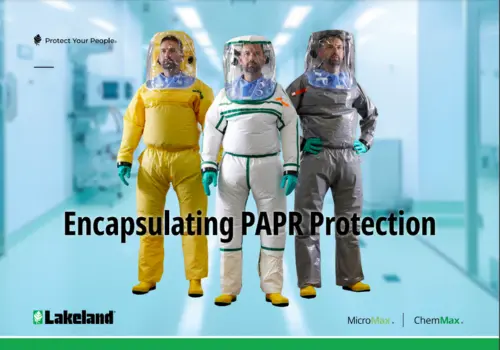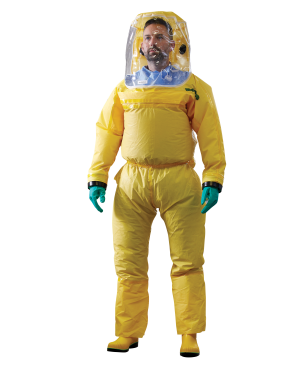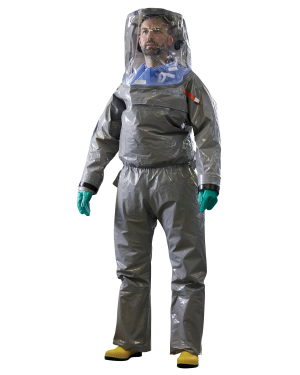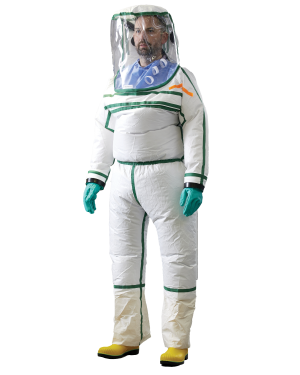Powered Air Purifying Respirator Suits
Lakeland PAPR suits combine a fully encapsulating design with a rugged, german-made PAPR blower unit.
The PAPR blower draws filtered air into the suit both to provide air and to create a constant positive pressure, exiting the suit via three rear-mounted one-way valves. The result is a chemical hazmat suit that combines:
- High level protection derived from the fully encapsulating design and positive pressure.
- A high level of comfort resulting from the constant supply of air into the suit.
Most chemical suits are uncomfortable to wear, and real wear time is limited by how long the wearer can bear the discomfort. With Lakeland PAPR suits, wear time is limited only by the Safe-Wear Time according to the chemical toxity and by the battery life of the PAPR blower!
Lakeland PAPR Hazmat suits are available in three fabrics, MicroMax® TS, ChemMax® 1, and ChemMax® 3.
Products
Filter by Garment Type
More
Filter by Seam Type
More
Please Note:
All test results quoted are from testing carried out at independent laboratories to the relevant {ASTM/CE} Standard(s). Unless stated otherwise tests are carried out on samples of the relevant protective material as opposed to finished garments. Note that all testing is conducted at specific temperatures according to ASTM or EN standard requirements. As permeation is affected by temperature it is important to consider the likely temperature in any application. Permeation test results record a time to a specific permeation rate as defined by the relevant standard and NOT a time to initial breakthrough of the chemical. Also note that differences may be apparent in some cases between CE and ASTM test results. Whilst the tests are similar, the CE standard records a time to a permeation rate of 1.0µg / min / cm2, whilst ASTM records a time to a permeation rate of 0.10µg / min / cm2. This may explain differences between results. As with all Personal Protective Equipment, selection should be based upon the end users risk assessment, it is the responsibility of the end user to determine the suitability of any PPE as part of this risk assessment and to comply with any/all legislative/governmental requirements. Contact Lakeland for more information.



